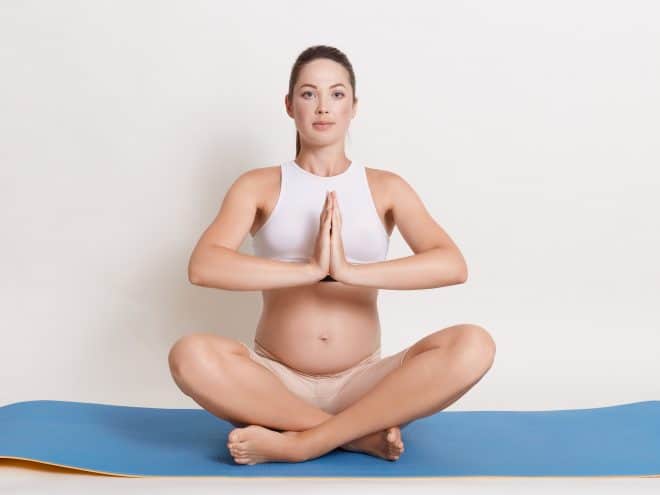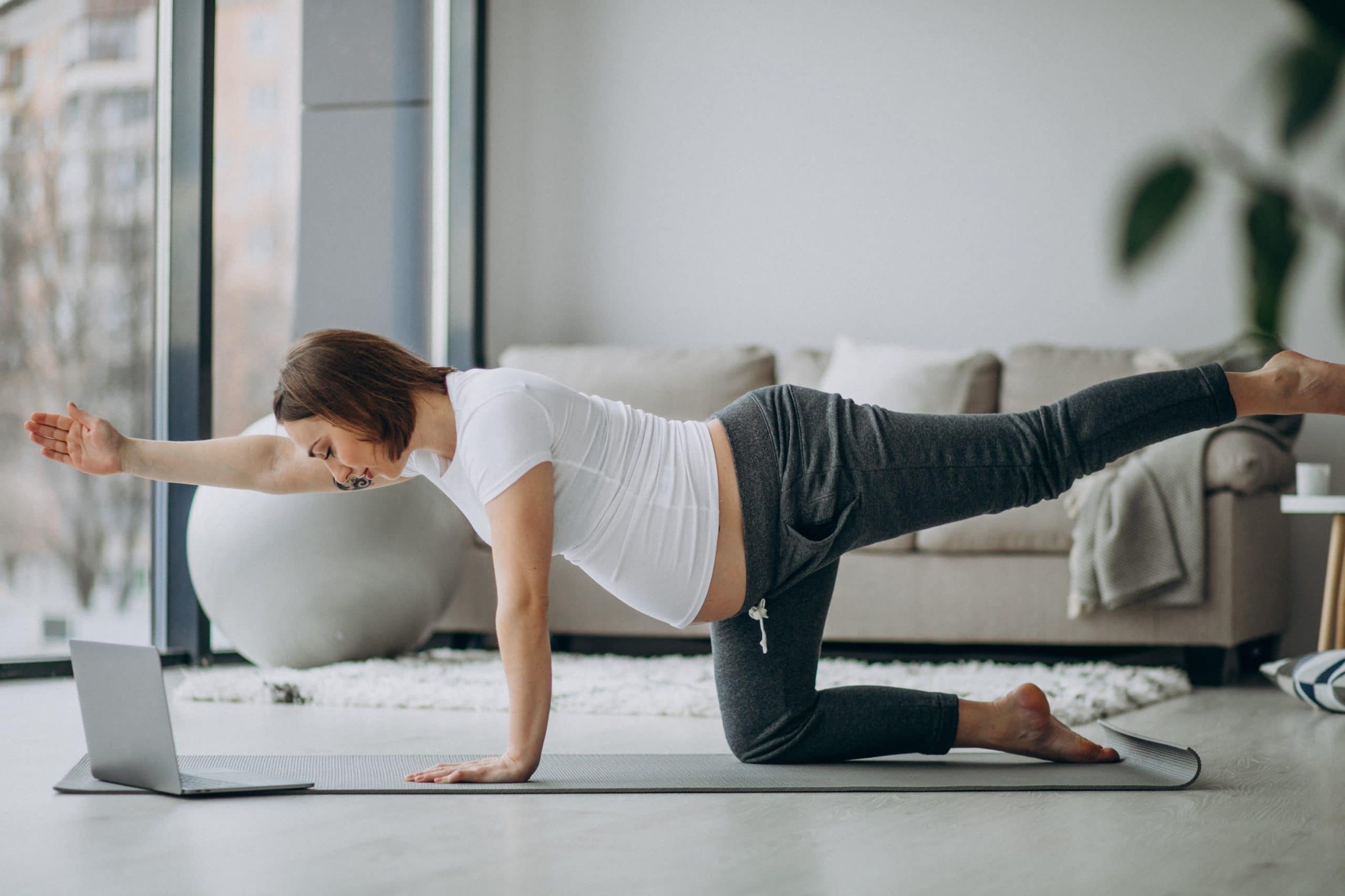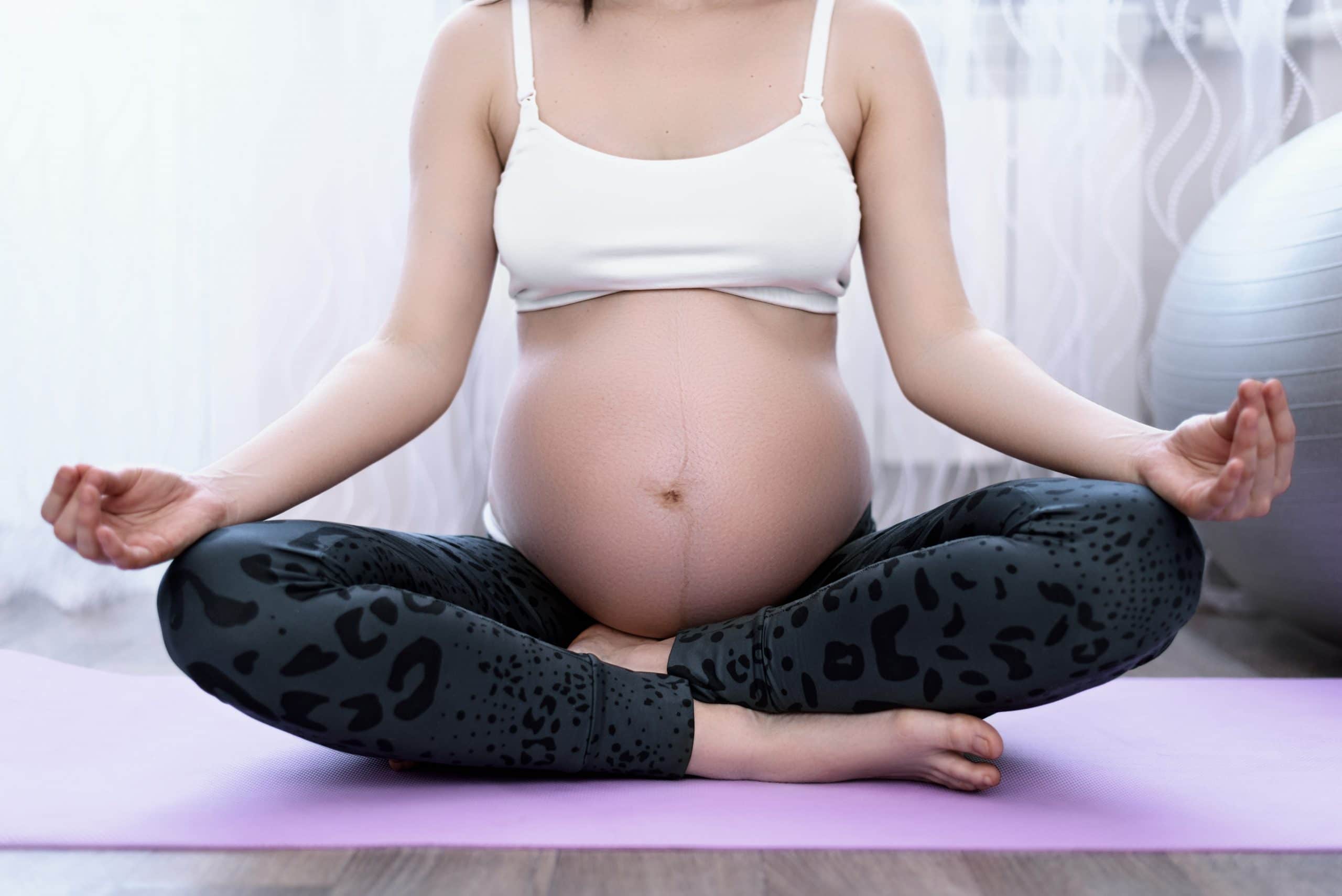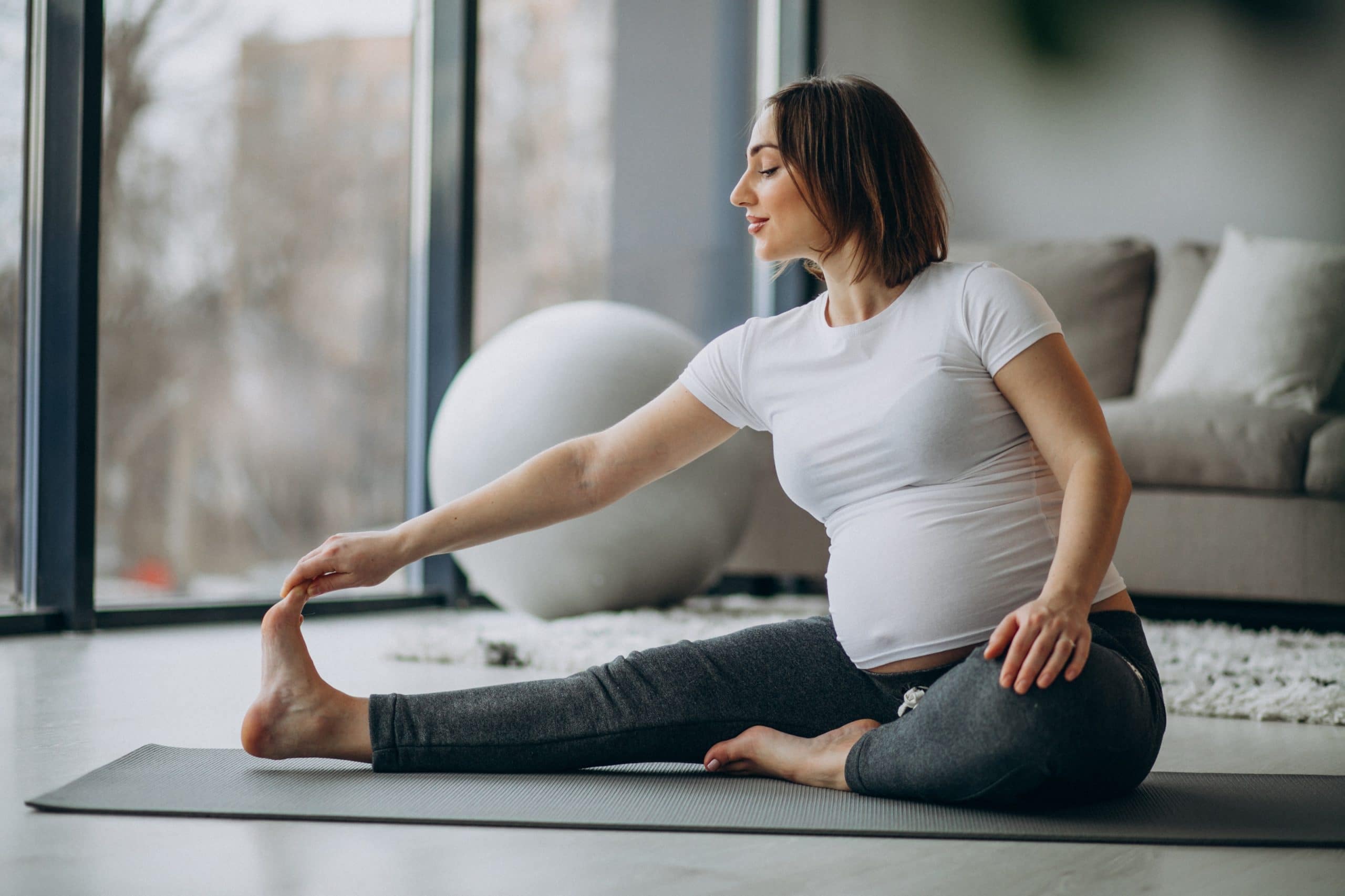Yoga And Pregnancy
Provided it is done safely, there is no doubt that the combination of yoga and pregnancy has many benefits for both you and your developing baby. It is a good way to stretch and relax while preparing your body for your labor and delivery. However, before you get started with any exercise regimen, be sure to consult with your OB-GYN. This is particularly the case if you have a high-risk pregnancy.
If you are attending a prenatal yoga class, rest assured that the poses will be adapted for pregnancy.
If you are attending a normal yoga class (i.e. a class that is not specifically geared towards pregnant women), be sure to tell your yoga instructor that you’re pregnant, and how far along you are.
If you are practicing yoga at home during your pregnancy, be sure to follow the guidelines below.
Contents
Pregnancy Yoga Poses That Are Safe
Practicing yoga during pregnancy is generally considering safe. However, each woman, and even each pregnancy, is unique. Therefore, fitness levels, possibilities, and limits can vary greatly.
While practicing yoga during pregnancy, it is important to remain aware. This gives you the ability to listen carefully and respond adequately to your body sensations, your circumstances, and feelings.
The yoga poses below are safe for pregnant women when performed properly.
All Fours Poses
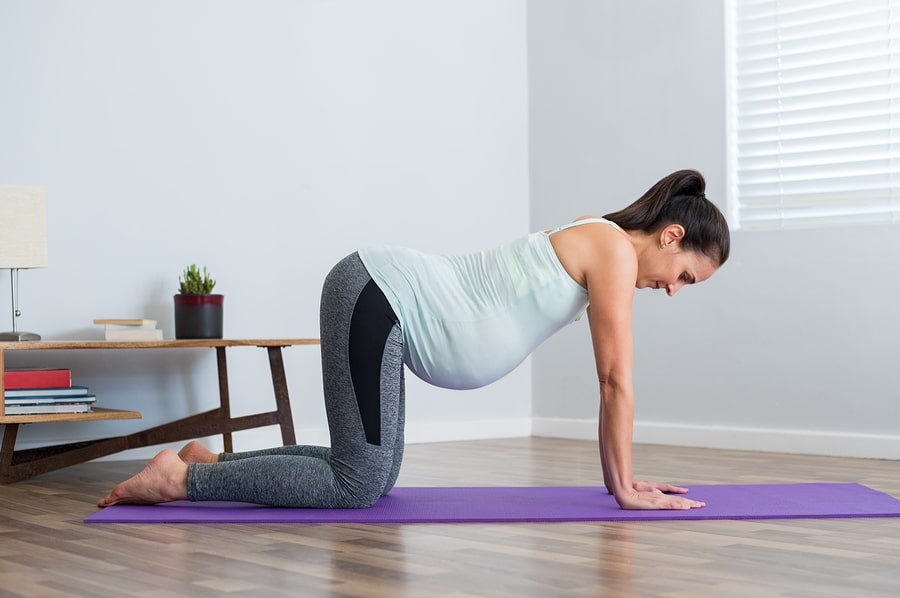
Positions on all fours like cat-cow can help get your baby into the optimal position for birth (head down, back to your belly).
If needed, this pose can be used to try and turn a breech baby later in your pregnancy if recommended by your prenatal care provider.
Side Stretches
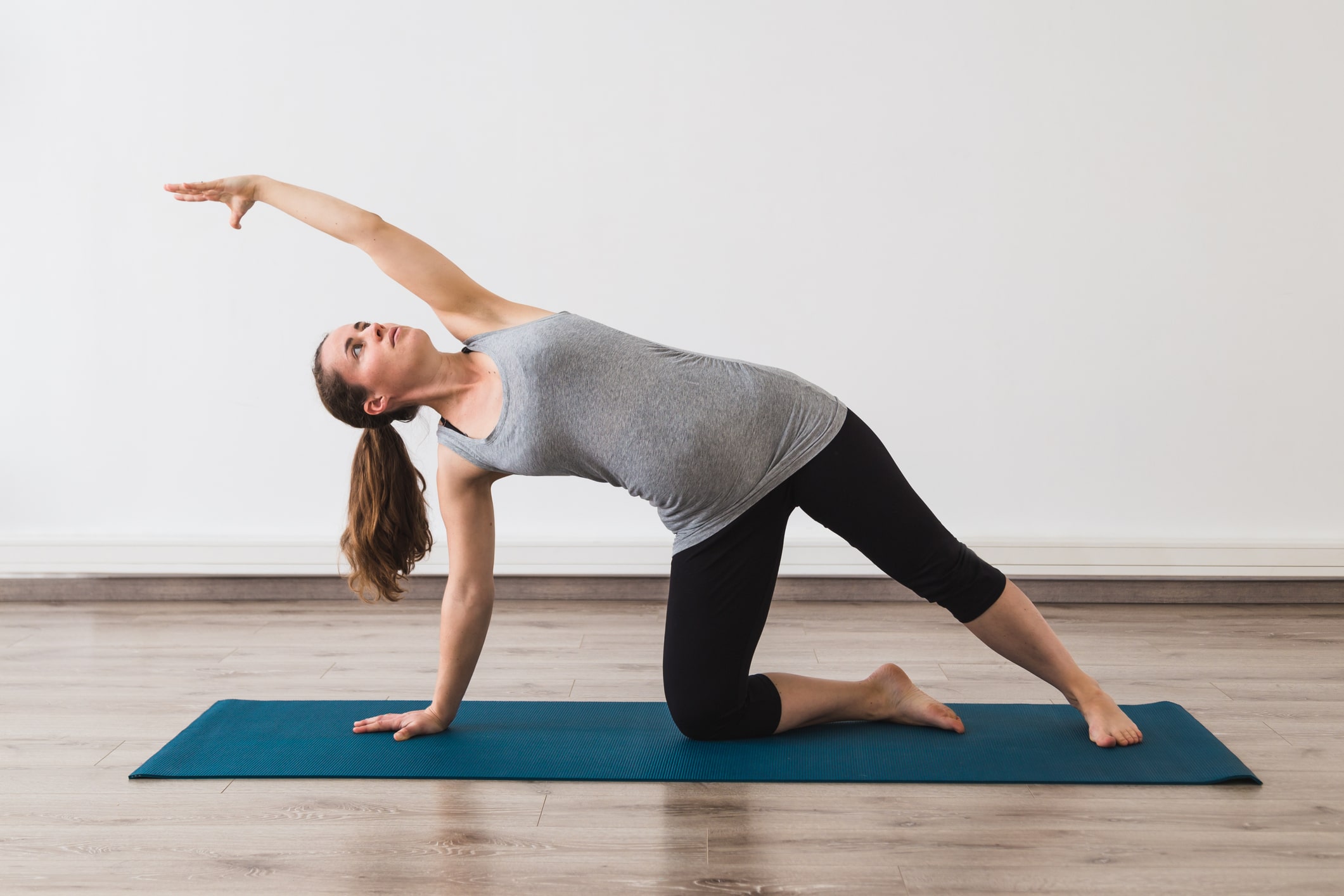 Side poses like gate pose, variations on side plank, side angle pose, etc. can feel very good when your belly starts to feel overcrowded.
Side poses like gate pose, variations on side plank, side angle pose, etc. can feel very good when your belly starts to feel overcrowded.
Squatting Poses
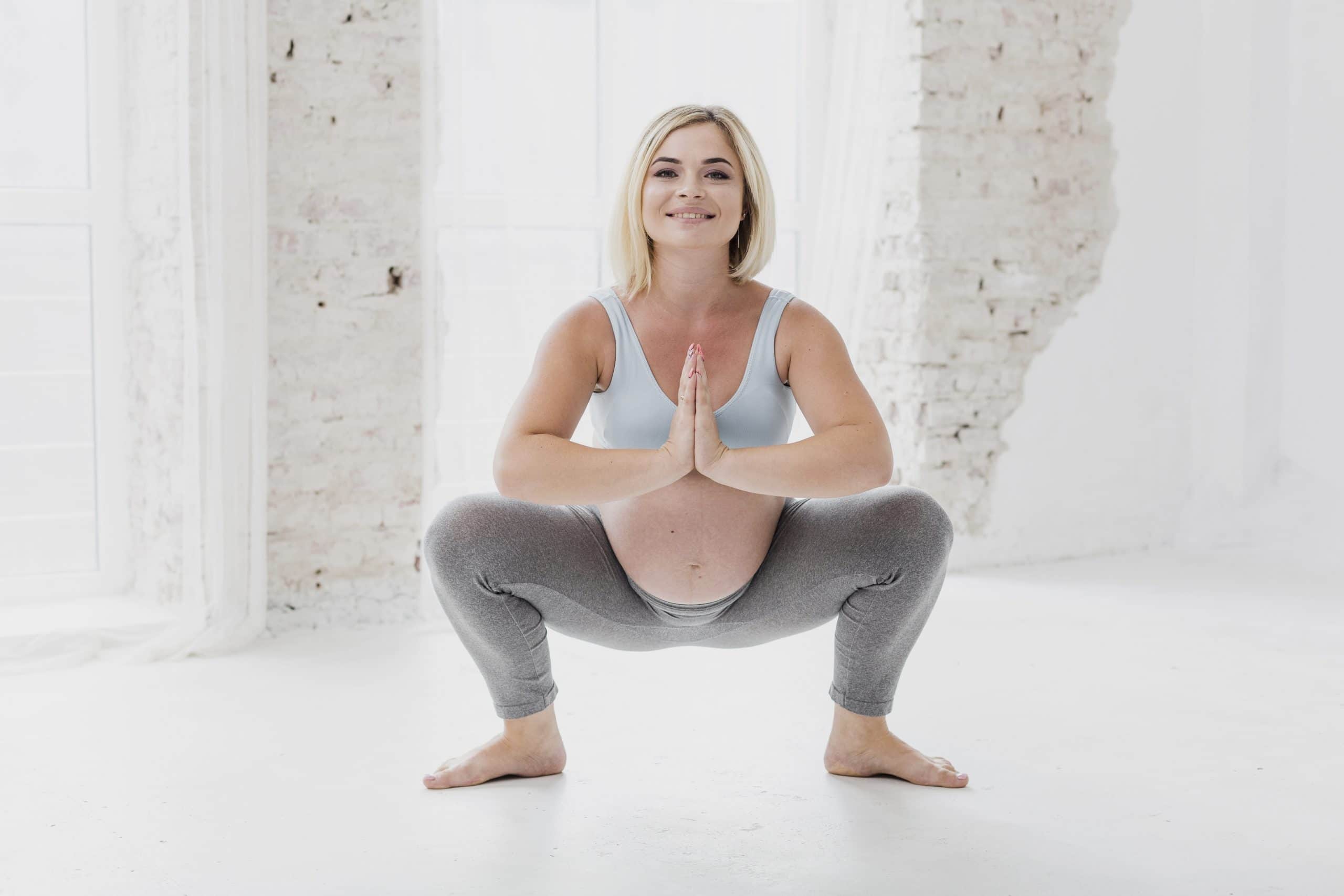 During your pregnancy, and particularly in the third trimester, squatting poses like the garland pose helps to mobilize the hips and pelvis and prepare for labor and delivery.
During your pregnancy, and particularly in the third trimester, squatting poses like the garland pose helps to mobilize the hips and pelvis and prepare for labor and delivery.
Standing Yoga Poses
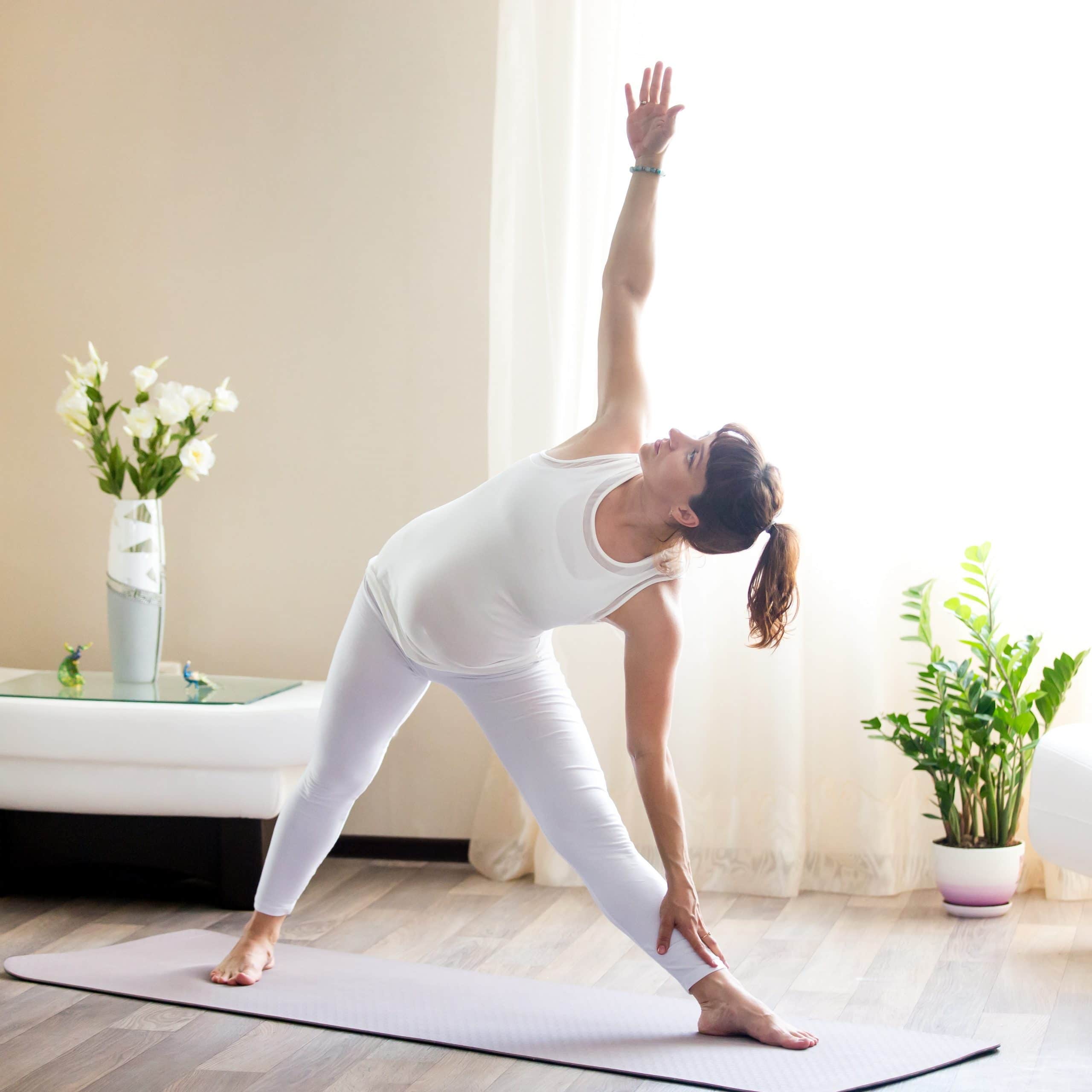 As your pregnancy progresses and your belly grows, begin to widen your stance in standing poses. Take your feet at least hip-distance apart to make room for your bump, especially if you are bending forward.
As your pregnancy progresses and your belly grows, begin to widen your stance in standing poses. Take your feet at least hip-distance apart to make room for your bump, especially if you are bending forward.
Poses like side angle stretch is great for easing digestive troubles related to pregnancy. It also improves the flexibility of your hips.
Hip Openers
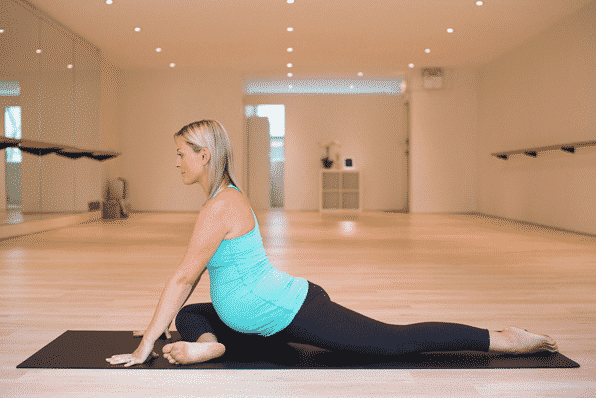
Poses like warrior II, pigeon, triangle, butterfly pose, Baddha Konasana, Ardha Chandrasana, and knee to ankle will help create flexibility that can make your labor easier. In particular, the pigeon pose is ideal for pregnant women because it helps to release tension in the hips and lower back.
When bending forward during your pregnancy, hinge from the hips, leading with your breastbone and extending your spine from the crown of your head down to your tailbone. This allows more space for your ribs to move, which makes breathing easier.
Sitting Stretches
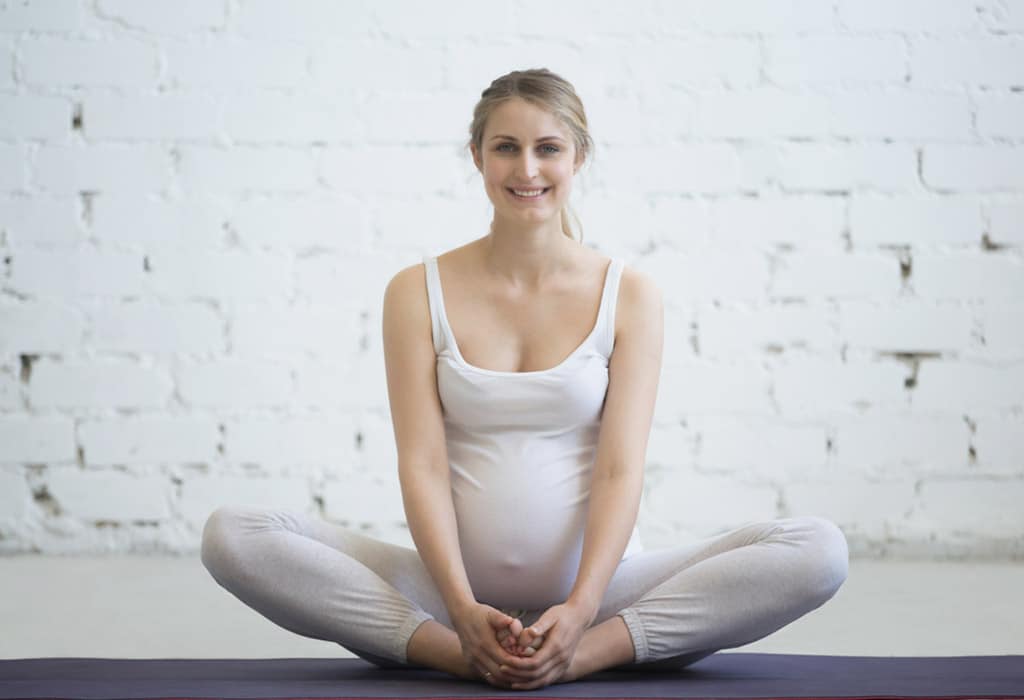 Seated yoga stretches like butterfly (baddhakonasana) is an easy exercise that helps in stretching your groin area and the hamstrings while alleviating abdominal discomfort.
Seated yoga stretches like butterfly (baddhakonasana) is an easy exercise that helps in stretching your groin area and the hamstrings while alleviating abdominal discomfort.
The butterfly pose can also aid proper digestion, it stretches and opens up your hips, thighs, and pelvic muscles, which can help in having an easy, normal delivery.
If you are bending forward while seated, place a towel or yoga strap behind your feet, and hold both ends. Try to bend from your hips and lift your chest to avoid compressing your abdomen. If your belly is too big for leaning forward, try placing a rolled-up towel under your buttocks to elevate the body. You can also open your legs about hip-width apart, to give your belly more room to go forward.
Yoga Activities And Poses To Avoid During Pregnancy
Balancing Poses On One Leg
As your belly starts to grow from the second trimester on, your center of gravity starts to shift. You will not have the balance that you had before – you could fall and injure yourself and your baby. Therefore, do any standing poses with your heel to the wall or use a chair for support.
Backbending
Avoid backbends like camel and the upward bow (wheel) pose.
Abdominal Poses
Certain yoga poses that are abdominal strengtheners, like the boat pose, should be avoided. By softening your abdominal muscles, you allow them to stretch more readily, which may help you avoid conditions like diastasis recti.
Lying On Your Stomach
You will probably be able to do a cobra pose during the first trimester, but as your belly gets bigger, laying on your belly should be avoided.
Fast Breathing
Avoid any pranayama that requires breath retention or rapid inhales and exhales, like kapalabhati. Instead, practice birthing breaths, which are deep inhalations through the nose and exhalations through the mouth. Birth breaths can relax you and help to keep you anchored in the present moment.
Twists
Deep twists from your tummy, for example, Ardha Matsyendrasana, compress the internal organs, including the uterus. During your pregnancy, twist more gently from the shoulders and back, instead of your waist. By doing this, you avoid putting pressure on your abdomen. You can also take an open twist, which means twisting away from your front leg.
Jumps
In the first trimester, jumps pose a slight risk of dislodging the fertilized egg from the uterus and should therefore be avoided.
Yoga Poses On Your Back
After the first trimester, do not do any yoga poses on your back. These poses can reduce blood flow to the uterus.
Poses That Stretch Your Muscles Too Much
Particular attention should be put on not overstretching your abdominals.
During your pregnancy, it’s easy to over-stretch and injure yourself. Your joints and ligaments become looser because your body produces the hormone relaxin. Relaxin allows the uterus to expand and it relaxes the ligaments in your pelvis. All this happens to prepare your body for childbirth. However, the hormone also softens connective tissue and relaxes ligaments and joints in other parts of the body. This puts you at an increased risk of strains, pulls, and other injuries.
Try to avoid going further into poses than you are used to. A pulled ligament is a serious injury that takes a long time to heal.
Handstands And Headstands
Even if you had no problem with balance pre-pregnancy, now is not the time to be doing headstands and handstands. Because of your belly, your center of gravity is off and you run the risk of falling and hurting yourself or your baby.
Bikram Yoga / Hot Yoga
A high body temperature (above 102 degrees Fahrenheit) may cause neural tube defects. Hot yoga is an activity that can increase your body temperature to above 102 degrees Fahrenheit, and therefore should be avoided.
Inversions
While being upside down does not pose any inherent risk to your baby, being pregnant is not the time to practice them. Even if you had perfect balance pre-pregnancy, your center of gravity is off during pregnancy and you do run the risk of falling.
The Benefits Of Yoga And Pregnancy
- With continued practice throughout your pregnancy, yoga will prepare your body for labor by helping it to open more efficiently and gently.
- Yoga reduces common pregnancy complaints like lower back or neck pain, insomnia, headaches, nausea, shortness of breath, and carpal tunnel syndrome.

- Breathing through yoga helps to center you and promotes calmness. Feeling calm and centered helps to relieve fears and anxiety you may have about your pregnancy and labor.
- Yoga and exercise during pregnancy improve digestion. It also helps to alleviate common late pregnancy symptoms like constipation, indigestion, and acid reflux.
- During your pregnancy, you experience a lot of hormonal changes. Yoga practice offers better emotional balance despite these hormonal changes.
- Yoga during pregnancy develops body strength;

- Regular exercise prevents muscle tensions due to changes in the center of gravity;
- Yoga and exercise in general during pregnancy leads to improved circulation and blood supply to the placenta;
- Pregnancy fitness through yoga practice prevents excess water in your body such as swelling and edema.

- Yoga practice encourages you to breathe. This in turn leads to more oxygen supply your baby.
- Yoga practice (and exercise during pregnancy, in general) increase the chances of a quicker natural delivery with fewer complications.
How Far Into Your Pregnancy Can You Practice Yoga?
Considering that each woman and pregnancy is unique, there cannot be a strict answer to this question. However, with adjustments, some women do practice yoga until their delivery.
The most important thing is to always listen to your body and make adjustments when necessary. If you feel any discomfort, stop. A good instructor can help you customize your yoga to suit the stage of pregnancy you’re in.
